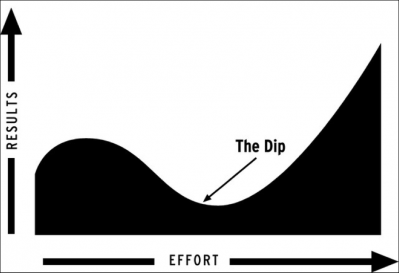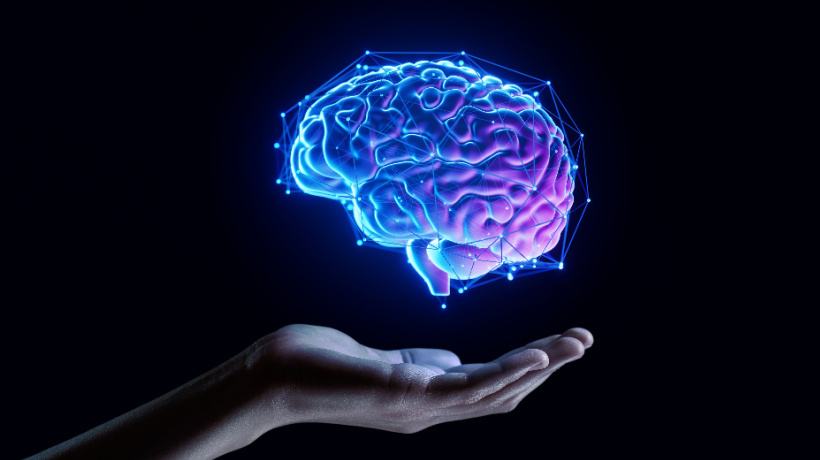What stops people from learning new skills? As the amount of online courses and learning opportunities seems to increase exponentially each year, I wonder why less than 10 percent of MOOC students finish courses they signed up for. While recently celebrating my Grandpa’s 92nd birthday, the main barrier to learning became clear.For his 92nd birthday, my Grandpa received an iPad. While my Grandma was marveling at my Grandpa’s iPad, she began to ask a few questions about how it works, eventually expressing her nervousness by asking, “But what it I fail?” She was completely comfortable using the touch screen and opening and closing apps, but had the emotional response of fearing the consequence of making a mistake.In the workplace, most people have a comfortable level of competency in their role. It’s not often they are pushed out of their comfort zone except when required during times of organizational change or a change in position. When their work requires improving skills or learning completely new skills, the biggest barriers to their learning, besides budget or time, are rarely technical, but are emotional.
Why are emotions a barrier to learning?
When undertaking a new learning endeavor, the learner usually follows a path similar to what Seth Godin refers to as “the dip” (image below). Things are fun at first, but then the learner becomes aware of their limitations and is frustrated by the gap between what they want to accomplish and what they are capable of. Fear of embarrassment, doubt, and inadequacy can creep in and quickly sabotage the learning process.
Josh Kaufman explains the emotional barriers involved with learning in his book, The First 20 Hours: How To Learn Anything Fast. While on a mission to learn how to type on a new style of keyboard, the main obstacle for him to overcome was emotional. He writes, “Our minds don’t help us here: our brains have a stubborn tendency to assume that what we’re experiencing in the moment will continue to be true in the future. Right now, my mind is freaking out. If I’m only able to type five words per minute, I won’t ever be able to work again! My career will be over! My family will starve! That’s not true of course, but it feels true in that moment. That emotional experience is the largest barrier to learning.”The barriers he faced and overcame while learning to use a style of keyboard are the same barriers people face while learning new software. The main obstacle they have to overcome isn’t the technical know-how, but the willingness to push through the period of feeling uncomfortable.
To combat the emotional barriers to learning, it’s critical that emotions are taken into consideration during the eLearning development process. Good instructional design doesn’t just educate the learner on what they need to know, but provides the most pleasant learning experience possible. With good planning, instructional designers can reduce the emotional barriers learners face.
3 Ways To Reduce Emotional Barriers In eLearning
- Set Proper Expectations
People need to understand that what they are experiencing is normal and that any uncomfortable feelings are a normal part of the learning experience. If learning the subject matter is sold to employees as “easy” in order to convince them to start when it is actually difficult, this will eventually backfire. Also, set rough time estimates for how long things will take to complete or learn. While everyone learns at a different pace, knowing that an eLearning module is almost complete will stop some people from closing out early. - Utilize Gamification
While many people blame video games for keeping kids glued to a screen instead of being outside on a sunny day, video games can offer a number of benefits.Anyone who has played a video game understands that failure is never fatal. You may face setbacks, but you have an infinite amount of “lives” and chances to redeem yourself. By making the experience of eLearning feel more like a video game through the use of gamification, learners may experience a shift in expectations that will reduce the stress of the learning process. People usually enjoy a challenging game, but not a challenging test. - Create Desire In The Learner
People are more willing to suffer through something uncomfortable if they desire what’s on the other side. At the start of the course, as well as with repeated reminders throughout the course, users should have a vision of what life will be like once they complete the course. What benefit does the course have? What will they be able to accomplish that will make their life better after completing the course? If they aren’t sure of the benefits, their motivation is going to sink once the course gets tough.
Learning is a lifetime process
At the age of 92, my Grandpa learned how to use his iPad to do everything he wanted (mostly play solitaire). Age isn’t a barrier to learning, but usually an excuse to avoid the uncomfortable emotions that often come with learning a new skill.As technology constantly improves and makes content creation easier to create and scale, the remaining barrier to learning is emotions. If instructional designers can account for them in the design process, it won’t necessarily make learning easy, but will clear the biggest hurdle on the path to competency for learners.
How do you handle emotional barriers in eLearning?









